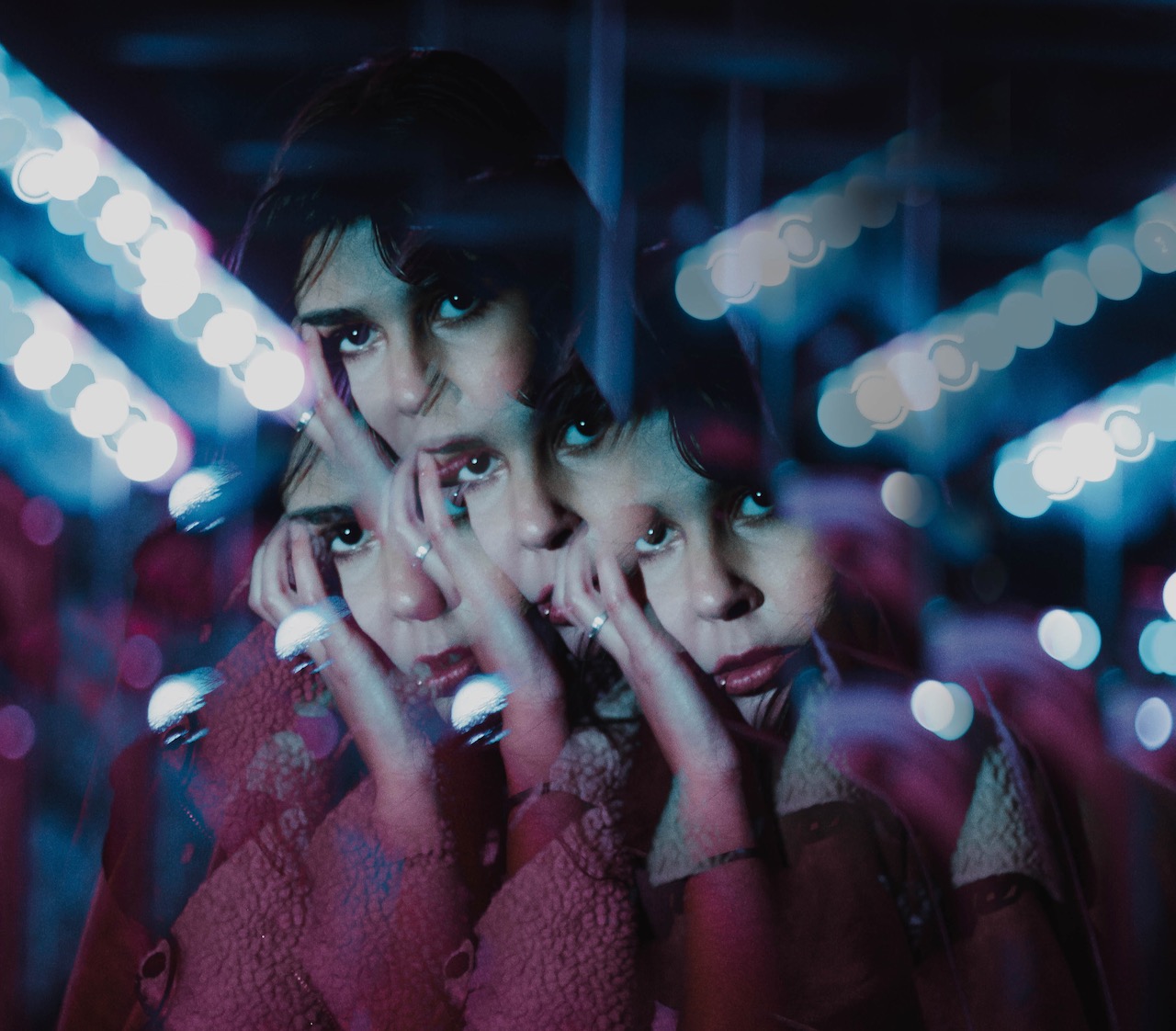Books & Culture
The Pandemic Made Me Feel Removed from My Body—This Book Put Me Back
"Kristin Lavransdatter" is a hundred-year-old book about medieval Norway, but it felt more real than the present

For years, I convinced myself I couldn’t grasp the sense of a sentence without paper and ink. The same letters, flashed on a screen, never seemed to hook their way into my brain. I’d scan whole books’ worth of grad school readings at the campus library just to print them out again. When I worked my way through them, I’d crease and crimp the pages with restless hands.
Now I read on my Kindle app, sneaking a few paragraphs between inbox refreshes and desultory tweets. On my phone, the words look manageable enough—each about as small as the pale moon-edge of my thumbnail, hovering just to the right of the screen.
I’ve dropped my phone so many times by now, but I can only see the cracks on the screen against the white of simulated pages. At certain angles, lines of gray score their way through sentences, cleave words in two, and lop the serifs off some letters. It’s my only reminder that reading this way is corporeal too, an interaction with something that has substance and can be broken. But when I turn the page, the scarred glass is almost frictionless underneath my thumb.
There’s a scene in Kristin Lavransdatter that made me think about reading physical books again. The titular protagonist—already, unknowingly, near the end of her life—thinks back on a book she once saw as a young wife. It was a thick volume in Latin, filled with the words of the thirteenth-century theologian Bonaventure.
Illuminated in gemmy ink, this book was “written on such thin and dazzling white parchment” that Kristin couldn’t believe “calfskin could be prepared so finely.” Her memory of that vellum, so fine and so white, now sounds to me like an apt description of my phone screen, a foreshadowing of the smooth glow I hold at my fingertips when I read.
Set in fourteenth-century Norway, Kristin Lavransdatter is a trilogy that follows one woman’s life from childhood to death, unfolding it at the scale of historical epic. True to its setting, it makes the rarity and value of every book clear. We learn that Kristin’s father, a wealthy landowner, owned five of them, which passed into her possession after his death. Her husband gifts her with another three. For Kristin, who learned to read in both Latin and the Norwegian vernacular as a girl, access to this library—lavish for the time—signifies her place among “the land’s best lineages,” like the meat at her table and the gold adorning her hands.
Written by Nobel Prize-winning author Sigrid Undset in Norwegian, the trilogy was published a century ago: volume one, The Wreath, came out in 1920. The digital omnibus I borrowed downloaded within seconds—in print, those megabytes would have come out to over a thousand pages.
I can picture that physical copy weighing down the empty space on my bookshelf, a volume with a scriptural heft. But on my phone, translator Tiina Nunnally’s language slipped into my head easily enough. Each paragraph felt finite and possible, like text from a friend I hadn’t seen in months. As I went, I found myself reading continuously for longer, instead of toggling to a different app every few swipes.
At certain points, Kristin Lavransdatter felt more real than the life I was living. I started thumbing through it last October, when I’d already been in my apartment for five months. The local library that sent the .mobi file to my phone was less than five minutes away on foot. I’d strolled past it before, on the walks I took my first few weeks in town, but I’d never been inside. It had been closed to physical patronage since before I arrived from the Bay Area.
Minnesota, where my partner’s family lived, seemed like a good place to wait it all out. And so we packed our stuff into cardboard boxes and sat in a socially distanced plane with an empty seat between us, breathing nervously into surgical masks while the chilled air circulated around us. Before we left, I got rid of so many books, abandoning them inside the glass-doored hutch of a Little Free Library that stood up the street from our apartment in Berkeley.
Reading Kristin Lavransdatter took me back to a time when my body wasn’t just an automaton but organ of feeling.
This was in the early days of the pandemic, when gloves seemed much more de rigueur than they are now—at least, people mentioned wearing them on Twitter, even if you rarely saw them on anyone in the street. I had a box of blue rubber ones that I used to rub purple coloring conditioner into the bleached ends of my hair, and I wore a pair of them to drop off my books. When they no longer fit in the Little Free Library vertically, I started stacking them horizontally, just a few slim volumes stacked over the top. I stacked the last of them on the grass, around the post that held up the little birdhouse that I’d stuffed with books.
I left well-thumbed foreign language dictionaries and textbooks spidery with annotations, readers I’d used to teach undergrads, and novels that I’d loved. A slick coffee table volume on Japanese street fashion, culled from the Half Price Books in town. This work didn’t pain me as much as I thought it would—I became just a body, jittery with energy, muscles strung too tightly for any other feeling. All I wanted was to be done with it quickly, so I could get back inside where the air didn’t seem ambient with potential harm. I remember the powder on the inside of my gloves mixing with sweat, forming a paste that made the rubber cling to the backs of my hands.
By the time I started reading Kristin Lavransdatter, the fearful, high-wire intensity of the move had faded to a dull memory. My adrenalinated gratitude at pulling it off safely had calcified too. What remained was a sense of roteness, as if the nerves had been abstracted out of me. I wasn’t scared anymore, or sad, or anything—I was a wind-up toy. I tried to take care of myself, drinking eight glasses of water a day and marking each of them in an app. I cycled between a series of easy Instant Pot stews and ate without tasting them. Three days a week, I made time to exercise, dancing along to ballet barre videos on YouTube without feeling whether my legs were turned out or my feet made the right shape. I stopped often between combinations to check my phone.
Reading Kristin Lavransdatter, though, took me back to a time when my body wasn’t just an automaton but organ of feeling. That’s because Undset clings so closely to the concerns of her protagonist, reporting her every sensation with tactile precision. Across her three volumes, Kristin’s existence unfurls in densely textured detail. From the lusterless quiet of my sealed apartment, the vividness of Undset’s language disoriented me, like a bottle of too-strong perfume.
Partway through the book, I ordered fragrance samples online, little vials filled with the smell of balsam and incense.
As Undset tells it, Kristin’s maiden years are wind-dried reindeer meat and the cool touch of golden-yellow silk—then, when she meets the man who becomes her husband, the feel of ardent fingers sliding into her hair. Later, marital life emerges as an accumulation of rough textures, muddying over the smoothness of her pampered girlhood: coal-black dung on her hands, the itch of her homespun wimple, her arms going knotted with muscle from farm work. Even her emotions are rendered in thickly corporeal language, sentences prickly with feeling. Thinking of her grown sons leaving home, Kristin grieves that they “would take with them bloody threads from the roots of her heart,” an image that made the skin at my breastbone physically itch.
Inside Kristin’s exhaustively rendered world of cotton and tallow, mud and sweat, I found myself remembering the reach of my own senses. Partway through the book, I ordered fragrance samples online, little vials filled with the smell of balsam and incense. I wore them in two dashes on my wrist when I read, sometimes bringing the inside of my arm to my nose. But then, inside the story, the Black Death entered Norway on an English ship.
I know I’m lucky. My parents were vaccinated last month, and I’ve been able to keep working from home, running little errands in a succession of floral-printed masks. Throughout the pandemic, I’ve drunk my water and eaten my stew, danced without feeling the strain or the joy of dancing. I can imagine myself holding still in this pattern, for years if necessary. I’ll almost certainly be safe at the end of that waiting.
From the beginning, I knew that Kristin Lavransdatter ended with the heroine’s death from plague. In truth, I started reading it in the vague hope that I could use it as a narrative mirror for these strange times. Instead, I found escapism into a more vivid life, a body that felt more precisely and deeply than my own. As I read, Undset’s thickly textured descriptions of Kristin’s sensory experience brought me back to a détente with my own senses. But then the Black Death slashes the story wide open.
Kristin Lavransdatter renders the physical reality of death in its usual, unsparing detail. Feverish and vomiting, the dying Kristin slumps, “soaked with sweat,” inside her convent dormitory, feeling “a sharp, stabbing pain” on every breath. Yet after weeks nestled inside her perspective, I felt strangely unaffected by her death. Her last, fevered hours felt abstracted to me, in a way the small sensations of her life never did. They were unfathomable from my place of safety.
I found escapism into a more vivid life, a body that felt more precisely and deeply than my own.
As Kristin’s body burned away from the inside, it became closed off to me. Instead, what undid me was Undset’s account of the early plague—the collective disorientation, not the individuated pain. When the Black Death first arrives, the narration disentangles itself from the nerves threading Kristin’s singular body for paragraphs at a time, hovering above to survey the anonymous mass of bodies instead. From that distant vantage, we see people, undifferentiated and unmoored, attempting to make sense of “a world without time”: “No more than a few weeks had passed, if the days were to be counted, and yet it already seemed as if the world that had existed before the plague and death began wandering naked through the land had disappeared from everyone’s memory — the way the coastline sinks away when a ship heads out to see on a rushing wind. It was as if no living soul dared hold on to the memory… nor was anyone capable of imaging that things might be that way again….”
When I encountered that passage for the first time, it left me reeling from recognition. Nothing else I’d read—not first-person essays, or reportage, or other pandemic novels—nothing had captured that early shock so precisely. But here, Undset gets at what it feels like for the impossible to take hold of your own small life and break it open, emptying out your sense of futurity like yolk.
Afterwards, I had to stop reading. I set my phone down to pace the length of my apartment—just a few strides from window to wall, from wall back to window. There was the same view I’d been looking at since I moved in May, adjusted incrementally by the shifting of the seasons.
This is the only view I can imagine having for months, a year, longer, as the snow slushes off the ground and the spiny trees grow back their leaves. In this world without time, there’s nothing else to look at—except for the pages on my phone, smoother and more dazzling than the finest vellum.









